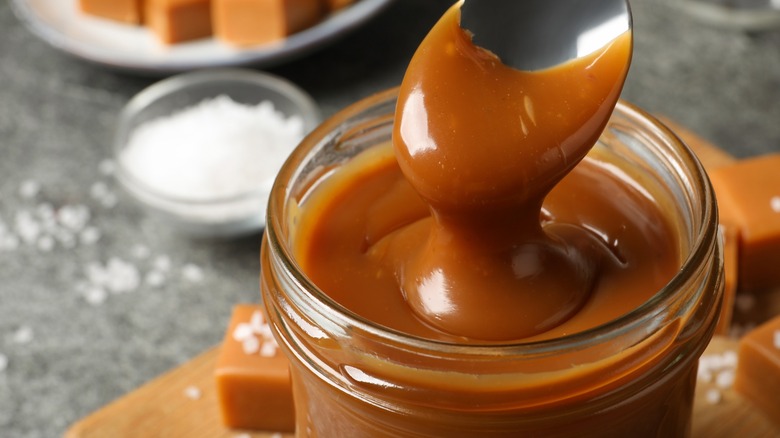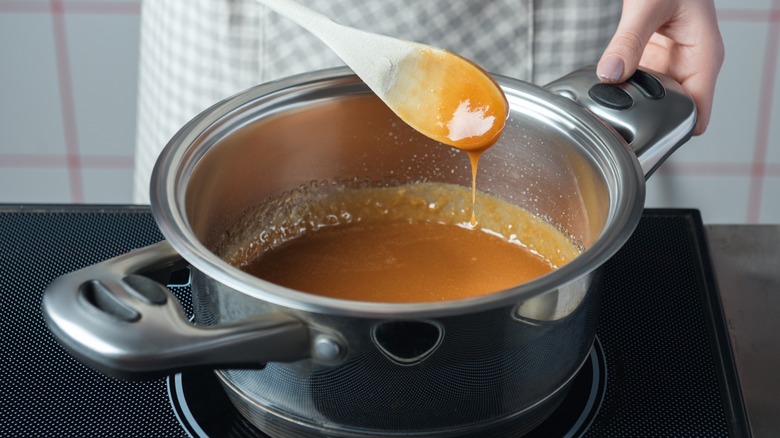The Crucial Ingredient Mistake To Avoid For Smoother Caramel
Making homemade caramel certainly takes plenty of precision and care, but it's totally doable and isn't as daunting as you may think. When it comes to crafting this sweet, decadent treat, you want to make sure that you're prepared — and that includes knowing the common caramel-making mistakes to watch out for so that you have the best chance at getting it right the first time. One of the most common mistakes? Using cold liquids.
Essentially, every caramel recipe will include some sort of liquid — typically, heavy cream — to help create the smooth and creamy texture. You may not think to heat up the aqueous ingredient before adding it — and plenty of recipes may not specify doing so — but it's actually a crucial step. If cold liquid is added to the sugary solution, which is already heated up on the stove, it will likely cause a splatter, which could result in an injury.
Beyond that, the cold liquid may also cause the caramel to seize, and, thus, harden due to the sudden temperature change, which we certainly don't want. Because of this, the best thing to do is heat any liquid before you add it to the caramel. Putting the heavy cream in the microwave for about 30 seconds should do the trick. The same thing goes for the butter — let it come to room temperature before adding it to the hot caramel.
Other tips for making the best homemade caramel
When making caramel, you want to make sure that you're using the right cookware. The pan should be sturdy and have a heavy bottom because it will heat much more evenly than a thin pan. It should also have tall sides so that the caramel has plenty of room to bubble up without the risk of overflowing. Also, while you're cooking the caramel, make sure not to over-stir it. Start by slowly and gently stirring, then stop as soon as the ingredients have fully melted. Otherwise, you risk the caramel crystallizing and becoming grainy.
Another way to prevent grainy caramel is to use a moistened pastry brush to scrape away any sugar crystals that start sticking to the side of the pot. Keeping a lid over the top when you're not stirring can also help prevent sugar crystals from forming because the lid traps moisture, which keeps the sugar from sticking. As the caramel finishes, you should very gently swirl the pot to make sure it cooks evenly.
It's also important to pay attention to the temperature to ensure that you don't burn the caramel. Keep the heat at medium-low — and, for most recipes, you'll even take it off the burner after the caramel starts bubbling (right before adding the butter). Sticking to these tips will help you perfect a basic caramel recipe. Once you've got that down, you can start experimenting with making flavored caramels, such as salted caramel sauce or bourbon caramel sauce.

